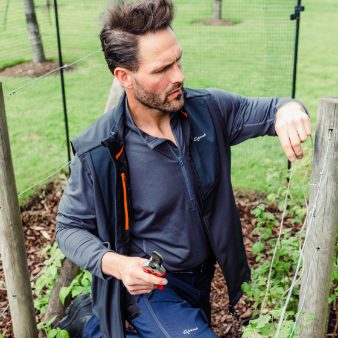Widening diversity in horticulture

Widening engagement and diversity, in other words ensuring that the diversity of society is reflected in a workforce or an audience, was an issue discussed in terms of gardening and horticulture. The diversity agenda has been a concern in many walks of life for many years. It has been supported by UK legislation, for example the Race Relations Act 1965 or the Sex Discrimination Act 1975 that established the principle of parity and anti-discrimination, and most recently the Equality Act 2010 which called on public bodies, education establishments and businesses to pro-actively ensure their goods and services were open to all.
At Chelsea this year ethnicity and disability have been highlighted. It was widely reported across traditional and social media, to be the first time that a Black designer entered a garden, and the first time a Black person won a gold medal since the show started 103 years ago. Julia Sargeant herself talked to the press about the lack of diversity in a gardening world that she said was “mostly white middle class people” with “a glut of double barrelled names within design. She was also reported as saying that what was being offered in terms of garden design and on gardening TV programmes was “the typical English garden that is perhaps not so relevant to people of multiple cultures and ethnicities”.
One big question Julia posed was whether the RHS, and other major players in the industry were working hard enough to widen engagement and diversity? Horticulture is not alone. There is a lack of diversity in the land-based industries, including farming and forestry which are sectors that have made concerted efforts to attract a greater diversity amongst the workforce. However, statistics show that people from Black and Asian Minority Ethnic backgrounds are over represented in some sectors of science, technology, engineering, and medicine and tend to excel in these areas.
They may not be in the majority, but there are Black British voices and faces in the horticultural limelight. The work of Zephaniah Lindo, Capel Manor College lecturer and TV presenter, should be acknowledged. He was co-designer of a garden that won silver-gilt at Chelsea in 2015 and has been on Gardeners' World more than once this year. And then of course there is the very lively TV presenter of The Instant Gardener, Danny Clark, aka the Black Gardener who was another very familiar gardening face also presenting from Chelsea this year.
If horticulture were representative of society as a whole it would reflect the 13% of the population recorded in the census as coming from ethnic minority backgrounds. By the same token there would be around 12% of people who are disabled. This year was the first that a wheelchair user took part in Chelsea TV commentary: Mark Lane garden designer made the point that disabled people too enjoy gardening (something we have blogged about before as it happens) and it amazes him that he seems to be the first garden designer in a wheelchair. He too thinks that “the horticultural world needs its knuckles rapped.”
Perhaps it really is time to push for a genuine Gardening For All culture and a real sense of “Vive la difference”!







